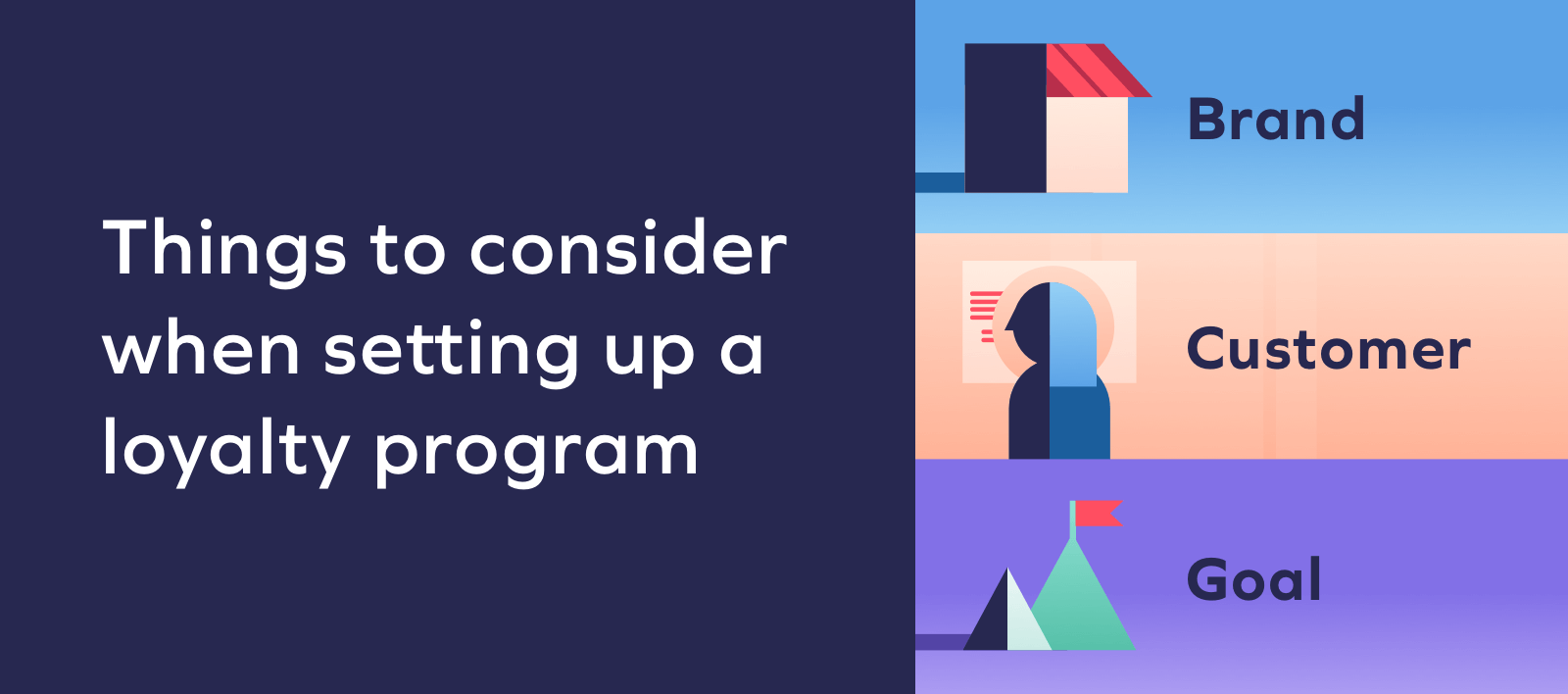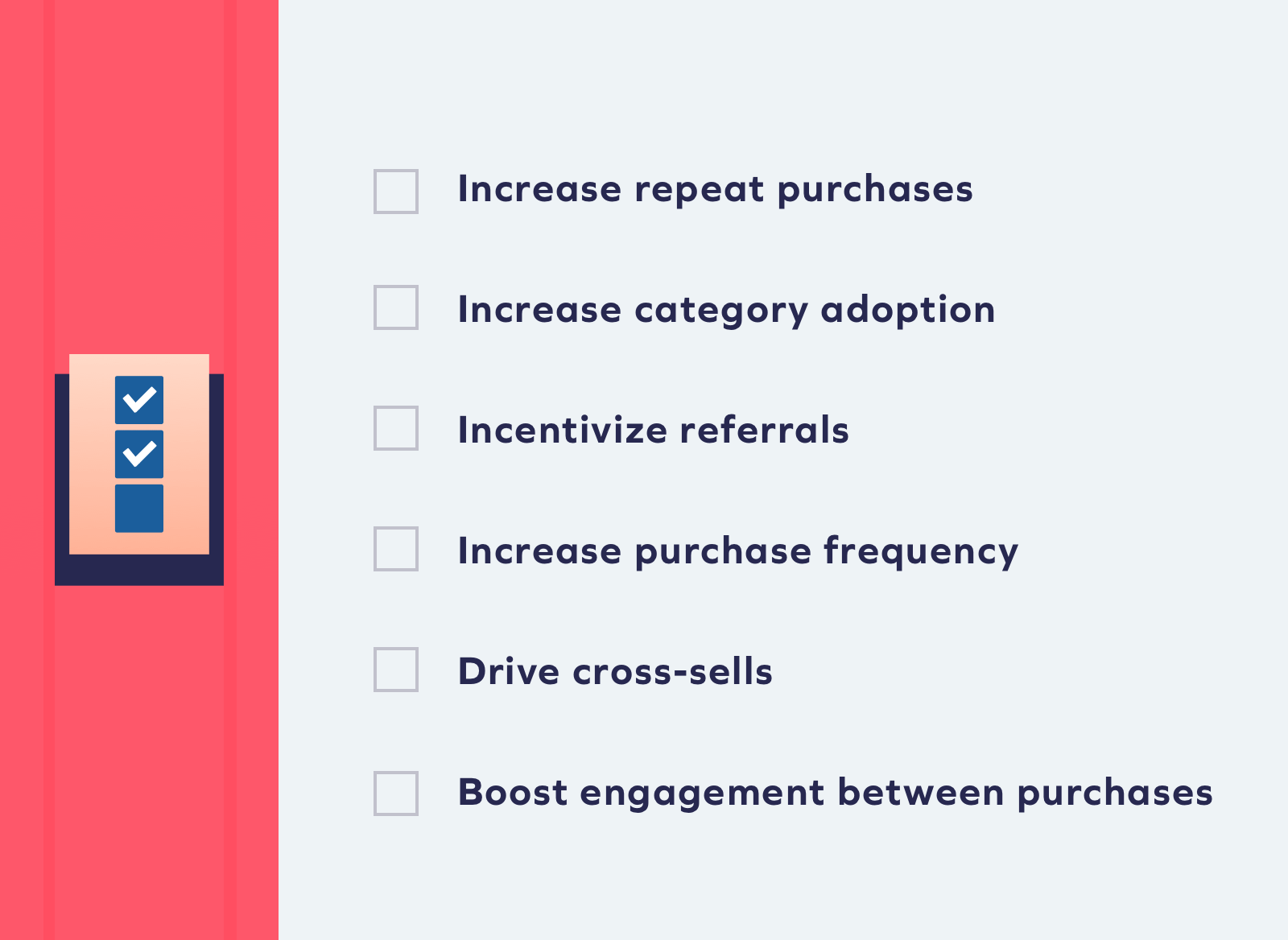How to Know What Kind of Loyalty Program Is Right for You
When thinking about loyalty, take your business model, customers, and goals into account. They’re key to structuring a successful program.
 Quickstart Guide to Loyalty
Quickstart Guide to Loyalty
When thinking about loyalty, take your business model, customers, and goals into account. They’re key to structuring a successful program.
Send this guide to your inbox.
Your information will be treated in accordance with our Privacy Policy
There is no one-size-fits-all approach to building an eCommerce loyalty program. A point system may work well for a beauty brand where customers purchase frequently, but for a kitchen appliance business, it would take customers years to earn enough points for a reward.
Structuring your program means taking several factors into account: what type of products you sell, your customers’ buying cycles, and your customer behaviors. When considering your customers’ behaviors, you can break it down even further:
Once you take these items into account, you’ll be ready to begin laying out your loyalty program.

What does your customer’s buying timeline look like? Are repeat purchases frequent or few and far between? Your industry and the breadth of products you sell will help inform your loyalty program.
For example, brands that sell consumables, like beauty products, typically have a higher purchase frequency, with shoppers coming back every few months to stock up on products as they run out. Yet, they likely struggle with new product adoption, as customers typically stick to purchasing products they know and love. Brands with this business model should consider creating a program that focuses on increasing their share of wallet, incentivizing shoppers for spending more, and diversifying their purchases.
On the other hand, fashion brands need to combat consumer buying cycles — most shoppers buy seasonally, with 3-6 months between each purchase. By the time a customer is ready to make another purchase, they’ll have been inundated by other options. Using a loyalty program, a fashion brand can incentivize customer engagement, like social follows, in between purchases to keep themselves top of mind.
When factoring your customers into your loyalty program strategy, consider both their current behavior and the actions you want them to take. Begin by looking at your data:
Then, decide which behaviors you want to incentivize through your loyalty program. Here are some options:
Once you have a firm grasp on what your customers want and what actions you want them to take, you can begin to structure your rewards system.
It’s important to set specific, quantifiable goals for your loyalty program so that you can measure your ROI and optimize your offerings over time.
Here are some examples of goals:

You can build a loyalty program based on just one or two goals, or all of the above — but it’s necessary to define how you will measure success, so you’ll know what’s working when it comes to delivering a great customer experience.
Read the next lesson to learn more about specific rewards and whether they’re right for your loyalty program.

